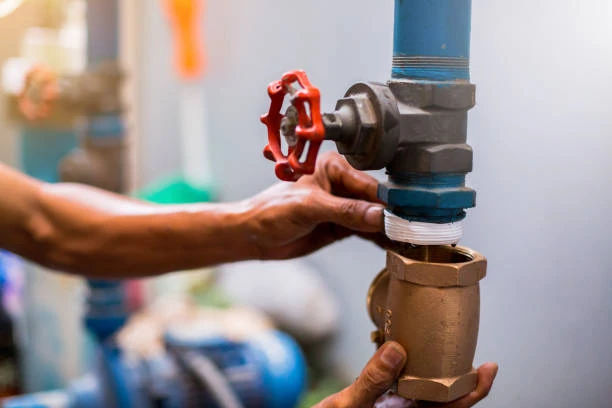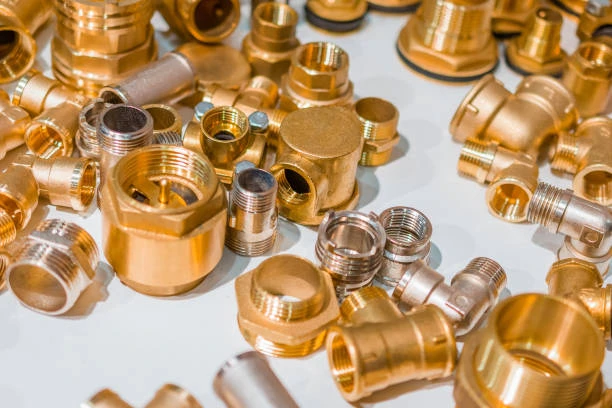Copper pipes and fittings have long been the go-to choice for plumbing systems due to their durability and reliability. However, instances of breakage and leaks have raised questions among homeowners and professionals alike. One common suspicion is whether county water supply could be a contributing factor. This article will explore the relationship between copper pipes, fittings, and the potential impact of county water quality, as well as other contributing factors to pipe failure.
Understanding Copper Pipes and Fittings
The Benefits of Copper Pipes
Copper is favored in plumbing for several reasons:
- Durability: Copper pipes are known for their strength and resistance to corrosion, making them suitable for both hot and cold water applications.
- Antimicrobial Properties: Copper naturally inhibits the growth of bacteria, ensuring safer drinking water.
- Longevity: When properly installed, copper piping can last over 50 years, making it a worthwhile investment.
The Role of Copper Fittings
Copper fittings connect various segments of copper piping and play a crucial role in maintaining the integrity of the plumbing system. They come in various forms, including elbows, tees, and couplings, each designed for specific configurations. Proper installation of these fittings is vital to prevent leaks and breakages.
Causes of Copper Pipe and Fitting Failures
Water Quality Issues
1. Corrosive Water
One of the primary concerns regarding county water supply is its chemical composition. Water that is overly acidic or contains high levels of minerals can lead to corrosion in copper pipes and fittings. Corrosive water can accelerate the deterioration of copper, leading to pinhole leaks or complete failures.
- pH Levels: Water with a pH below 7 is considered acidic and can corrode copper over time.
- Chlorine Levels: High chlorine content, often used in municipal water systems for disinfection, can also contribute to the corrosion of copper pipes.
2. Hard Water
Hard water, which contains high levels of calcium and magnesium, can lead to mineral buildup inside copper pipes. This buildup can restrict water flow and increase pressure within the pipes, potentially causing fittings to break or leak.

Installation Issues
Improper installation of copper pipes and fittings can significantly increase the likelihood of failures. Common installation problems include:
- Soldering Errors: If fittings are not soldered correctly, they may develop leaks over time. Poor solder joints can be particularly vulnerable to pressure changes.
- Incorrect Sizing: Using the wrong size fittings can lead to stress on the pipes, resulting in cracks or breakages.
- Poor Support: Failing to adequately support copper pipes can lead to sagging and stress at joints, increasing the risk of failure.
Environmental Factors
Several environmental factors can also contribute to the breakage of copper pipes and fittings:
- Temperature Fluctuations: Extreme temperature changes can cause copper to expand and contract. Repeated cycles of expansion and contraction can weaken joints and fittings over time.
- Ground Movement: In areas prone to seismic activity or heavy construction, ground movement can place stress on buried copper pipes, leading to fractures.
- Age of the System: Older plumbing systems may be more susceptible to failures, as materials degrade over time. Even high-quality copper pipes can weaken as they age.
Is County Water to Blame?
While county water supply can contribute to the deterioration of copper pipes and fittings, it is not the sole factor. A combination of water quality, installation practices, environmental conditions, and the age of the plumbing system plays a crucial role in the overall health of copper piping.
Testing Your Water Supply
If you suspect that your county water may be affecting your copper plumbing, it is essential to test your water supply. A water quality test can identify:
- pH levels
- Chlorine concentration
- Hardness (calcium and magnesium levels)
- Presence of other corrosive substances
Seeking Solutions
If water quality is identified as a problem, consider these solutions:
- Water Treatment Systems: Installing a water softener can help reduce hardness and prevent mineral buildup. A reverse osmosis system can improve water quality by reducing acidity and other corrosive elements.
- Regular Maintenance: Periodic inspections of your plumbing system can catch potential problems before they lead to significant failures.
- Professional Consultation: If you experience persistent issues with your copper plumbing, consult a licensed plumber. They can assess the situation, provide recommendations, and ensure that your system is up to code.
Conclusion
Copper pipes and fittings are reliable components of plumbing systems, but they are not immune to breakage. While county water supply can contribute to corrosion and other issues, it is essential to consider multiple factors that may be at play. Understanding the potential causes of failures and implementing preventative measures can help homeowners maintain a healthy plumbing system for years to come.
Frequently Asked Questions (FAQs)
- What are the main causes of copper pipe leaks?
Common causes include corrosive water quality, improper installation, temperature fluctuations, and environmental factors. - How can I test the quality of my county water?
You can test your water by purchasing a home testing kit or hiring a professional water quality testing service. - What should I do if my copper pipes are corroding?
Consider installing a water treatment system, regularly inspecting your plumbing, and consulting a licensed plumber for advice. - Can hard water affect copper pipes?
Yes, hard water can lead to mineral buildup inside pipes, increasing pressure and potentially causing fittings to break or leak. - How long do copper pipes typically last?
When properly installed and maintained, copper pipes can last over 50 years, though their lifespan may vary based on environmental factors and water quality.




